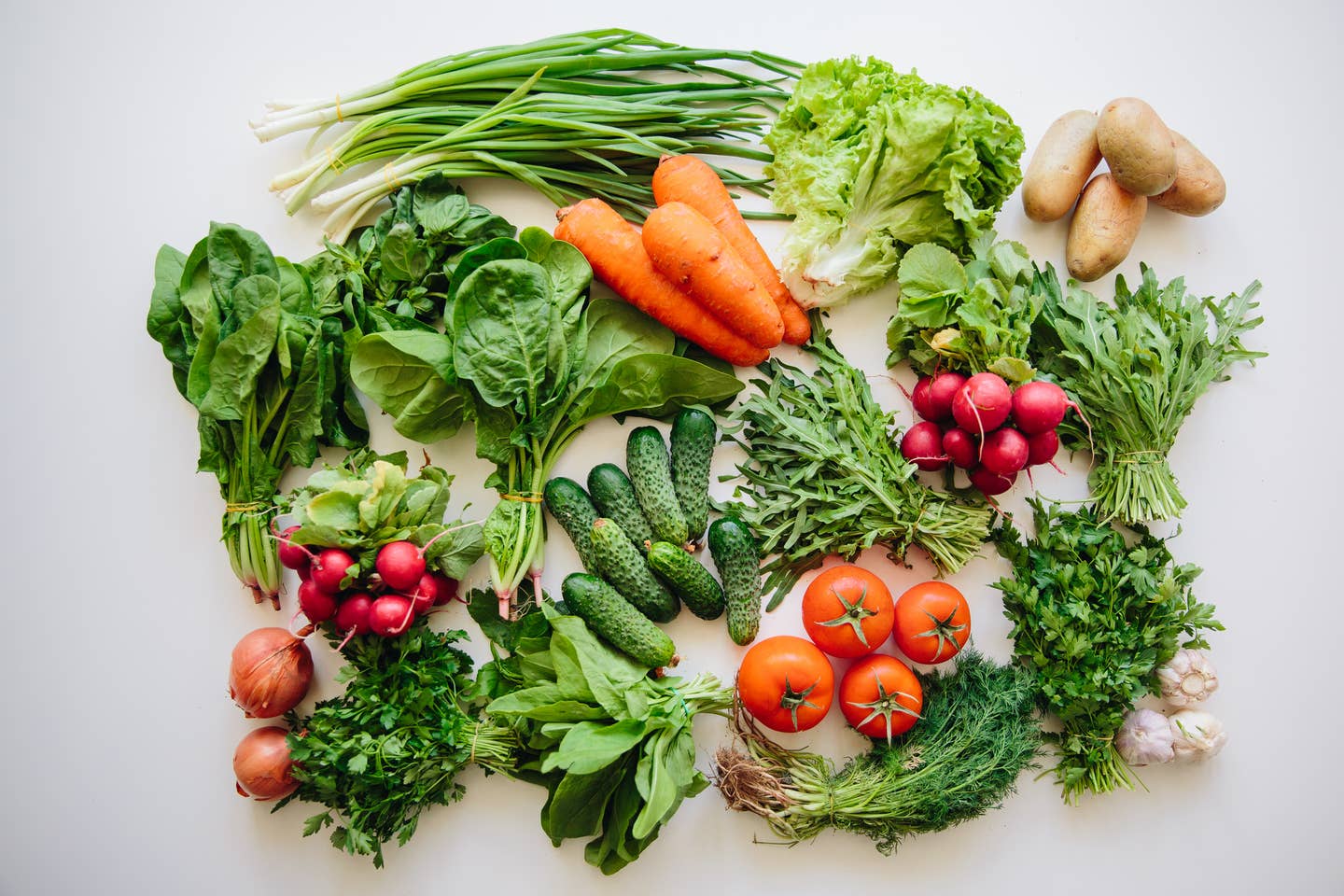
The 5 Best Vegetables That Can Grow Anywhere, Even Without A Garden
Having a big garden is always the best way to enjoy your homegrown vegetables for both leisure and safety reasons. Unfortunately, not everyone has that luxury. If you live in an apartment or condo, don't let this stand in the way between you and your desire of having fresh vegetables within your hand’s reach. Surprisingly, most of them can grow in a heavily confined space like a pot or a basket, as long as you know the right way.
If you are a complete novice at container gardening, here are the best vegetables and herbs to grow anywhere even without a garden, and how to grow them correctly.
1. Lettuce
Growing salad greens like lettuce in containers won't take you much time, making it a perfect solution when you want to add a quick greenish look and some nutritious benefits into your dishes for the beloved ones.
Lettuce doesn't require much sunlight compared to other vegetables; it can grow perfectly fine in the shade, unlike plants grown for fruit. In fact, it can be even better for lettuce if you keep it under some shade. By doing so, you can keep the fresh leaves cool, hence prolong the harvest throughout the season.
You can easily transplant or sow the lettuce in containers, giving you total control over pests and weeds compared to vast gardening space. While you can prepare your small garden for an early, productive lettuce crop in the spring, it is actually better known as a fall crop.
This vegetable thrives the most when the temperature falls between 60 to 70 degrees Fahrenheit. Here is a tip: if you find some lettuce a bit bitter, there is a high chance those leaves were grown in high temperatures as lettuce grown in cool weather would taste the sweetest.
Water is another thing you should always keep an eye on when growing lettuce without plenty of space. Due to the shallow roots, it only flourishes with consistent and shallow watering.
2. Tomatoes
If we have a survey for the most loved vegetables and herbs, tomatoes will never fall out of the top positions. As one of the most popular vegetables, you can grow tomato plants pretty much anywhere, even without a garden.
A container in your backyard or a basket hanging on your balcony are both great options for tomatoes, as long as they can get a lot of direct sunlight and support for their stalks.
While growing them is a breeze, keeping tomatoes healthy is another story. Fungal diseases are these sappy fruits’ worst enemy, especially when the weather becomes hot and humid.
But you can try smaller (and most importantly, hardier) tomato varieties, such as pear, grape, and cherry tomatoes. They generally have greater resistance to blights and other diseases. You can stake, hang, or sprawl them in containers or baskets. It's hard to think of a wrong way to grow those low-maintenance plants.
With that being said, we don't mean you can plant them in a random place and expect a bunch of fresh, ripe tomatoes later. The real secret for growing them without a garden is to find the biggest container and set up some cages for the plants to lend on. Only by doing so, the tomatoes won't bend and break the vines due to their fruits’ heavyweight.
3. Carrots
Carrots are a great choice for both experienced gardeners and beginners who are cramped in space. They might not be the first type of vegetables that pops up in your mind when it comes to container gardening. But you are not the one only caught by surprise with how effective this method is with carrots.
Good soil, of course, makes all vegetables develop better, but beware, carrots are one of those crops that are extremely sensitive to it. As a root vegetable, carrots don't grow well in stony or heavy clay soils.
If you want carrots with the sweetest flavor and the best appearance, you'd better have friable and well-drained soil with a neutral level of alkaline. That's why grow bags are an excellent environment for growing carrots when you don't have space for a real garden.
As long as you can squeeze some bags or containers on your rooftop, patio, or balcony, where they can receive a lot of direct suns, carrots will grow better than you might think. On top of that, container gardening also means you can put many common problems like garden weeds and pests behind.
From animated movies and TV series, we are familiar with the classic cone-shaped, perfectly orange carrots for bunnies. But they actually exist in plenty of forms and sizes. Growing carrots at home is a great opportunity to encounter uncanny carrots of strange (and cute most of the time) shapes and appearances.
4. Green Beans
From whole beans to string beans, all kinds of green beans work great without a full-sized garden. You can choose one variety from hundreds of options to grow on your rooftop and patio.
Hearing the sound when you snap and harvest them is also satisfying and entertaining, an effective way to unwind after a busy and stressful day at work. But before you run out and buy a bag of seeds, you must be aware of green bean types and their growth habits first.
Here's the thing: People often put green beans into 2 categories, bush beans and pole beans. Bush beans are shorter and don't need any kind of support to stand. They also mature quickly and grow well in a limited space like containers. On the other hand, pole beans typically climb up poles (hence the name), fences, teepees, and trellises. Pole beans can definitely live on the ground, but it'll be a mistake if you let them there.
Without a doubt, this rather abrasive plant will sprawl all over the place, and your garden will quickly become a messy, tangled jungle. This is not optimal to grow vegetables like pole beans, and certainly not fun when the harvest time comes.
5. Garlic
The final place on this list belongs to the only herb candidate, garlic, and it has more differences than just the name. Since garlic requires regular watering and has a longer season, growing it in a container at home is trickier than the previous vegetables.
This cousin of onion is usually grown as an annual crop with some key requirements for day length and temperatures. So there is no doubt that growing garlic indoors is much harder, even though you can easily do it on a deck or a patio.
Don't let this challenge discourage you. Any gardener that has managed to do so will tell you that it was worth all the effort. Not only does homegrown garlic keep vampires out the door (it was a joke, or not), but it also elevates the taste of your food with its pungent aroma - something store-bought garlic cannot compete. Just remember that since garlic has shallow roots, it needs a lot of room to spread. It would help if you have a deep pot with plenty of drain holes at the bottom. Wooden barrel halves or crates still work, but black plastic pots and buckets are the ideal choices since they are frost-proof and don't crack during the winter.
You can enjoy your homegrown vegetables and herbs even if you live in an urban area or a small apartment. Container gardening is a perfect fix for this issue. Additionally, a patio or a balcony is an ideal starting place for beginners to learn some basic gardening techniques before you can think about a full garden.
More From The Beet






